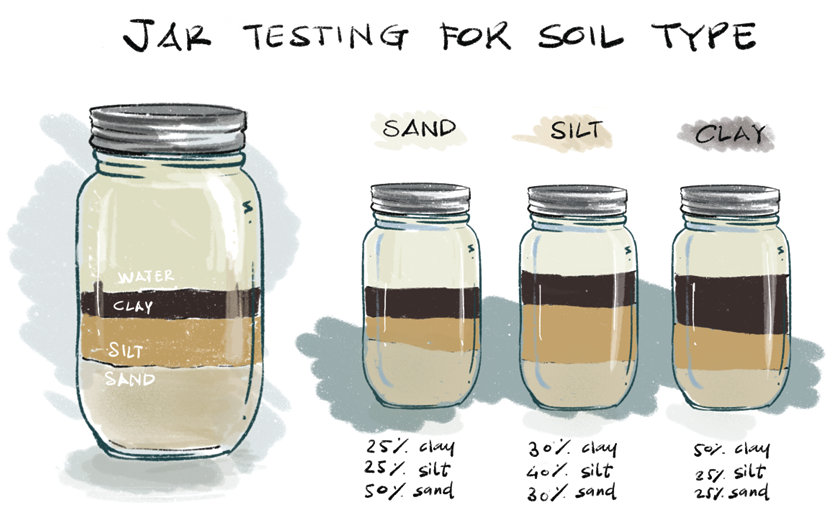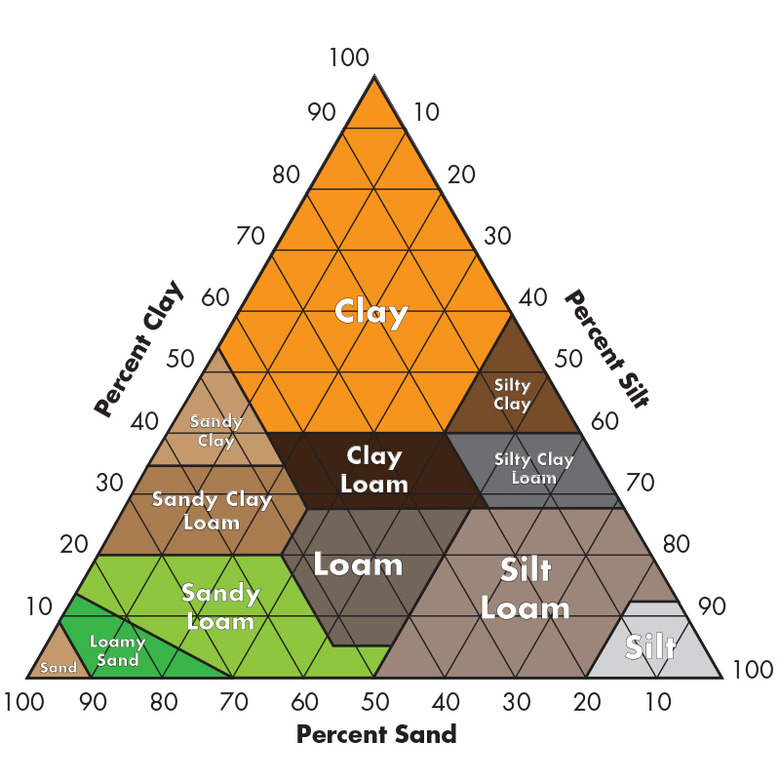What’s Your Soil Made Of? Try the Easy Jar Test to Find Out
Your soil’s texture—how much sand, silt, or clay it contains—affects everything from how water moves through your garden to how well your plants absorb nutrients. One of the easiest ways to get a feel for your soil type is with the jar test, a quick DIY experiment you can do with just a glass jar and some soil from your yard.
How to Do the Soil Jar Test
- Dig a Sample: Collect about 1 cup of soil from your yard or garden. Try to remove mulch, roots, and rocks.
- Add to a Jar: Scoop the soil into a clear quart-sized jar with a tight-fitting lid.
- Add Water & Soap: Fill the jar ¾ full with water and add 1 teaspoon of liquid dish soap (this helps separate the particles).
- Shake It Up: Shake the jar for at least 1–2 minutes to fully break up the soil.
- Let It Settle: Let the jar sit undisturbed for 24 to 48 hours.
Over time, the soil will separate into three layers:
- Sand settles first (within minutes)
- Silt settles next (in a few hours)
- Clay stays suspended the longest (may take a full day or more)
Mark the top of each layer and measure their depths to estimate the percentage of sand, silt, and clay in your soil. For example, if your soil layer is 4 inches deep and your clay layer is 1 inch, that’s 25% clay.

Using the Soil Texture Triangle
Once you’ve calculated the percentages of sand, silt, and clay in your soil sample, it’s time to figure out what that actually means for your garden. The soil texture triangle is a tool that helps you determine your soil’s texture class—terms like sandy loam, clay loam, or silty clay. These classifications tell you a lot about how your soil behaves, from drainage and compaction to nutrient retention and workability.
To use the triangle:
Find your sand percentage on the bottom axis and follow the line upward and to the left.
Find your silt percentage on the right axis and follow the line downward and to the left.
Find your clay percentage on the left axis and follow the line straight across to the right.
The point where all three lines intersect marks your soil’s texture class.

Soil textures fall into several named categories based on the relative percentages of each component. For example:
- A soil with over 70% sand and low clay content might be classified as sandy loam or loamy sand. These soils feel gritty, drain quickly, and warm up fast, but may dry out too easily and lack nutrients.
- Soils with at least 40% clay are typically classified as clay, clay loam, or silty clay. These tend to be sticky, slow-draining, and dense—but they hold nutrients well and retain moisture.
- More balanced soils—often called loams—contain roughly equal parts sand, silt, and clay. Textures like loam, silty loam, or clay loam fall into this group and are generally ideal for gardening because they combine good drainage with nutrient and moisture retention.
Knowing your soil texture helps you make better decisions about watering, fertilizing, and amending your garden beds. It’s a great first step toward building healthier, more productive soil.
Why Soil Texture Matters for Watering & Fertilizing
Your soil type tells you how to manage irrigation and nutrients more effectively:
Sandy Soil
- Drains quickly and dries out fast
- Needs more frequent, light watering
- Struggles to hold nutrients—add compost or organic matter regularly
Clay Soil
- Holds water longer and can stay soggy
- Water less frequently but deeply
- Naturally richer in nutrients but prone to compaction—add organic matter to improve structure
Loamy Soil
- Offers the best of both worlds: good drainage and water retention
- Great for most plants and easier to manage long term
Understanding your soil helps you pick the right plants, fine-tune your watering schedule, and build a more resilient, low-maintenance landscape. Plus, the jar test is a fun hands-on way to get to know the ground beneath your feet!
CATEGORY
8/25/2025
a word from our viewers